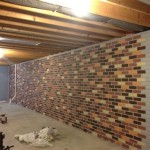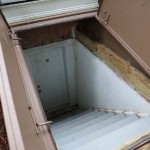Vapor Barrier For Basement Walls: Essential Aspects to Consider
Protecting your basement from moisture damage is essential for maintaining a healthy and livable space in your home. Vapor barriers play a crucial role in this protection by preventing water vapor from penetrating into the basement walls and causing problems such as mold, mildew, and structural damage. Understanding the essential aspects of vapor barriers for basement walls is key to making an informed decision about the best option for your needs.
Types of Vapor Barriers
There are two main types of vapor barriers: polyethylene sheeting and vapor-retardant paint. Polyethylene sheeting is a thin, plastic film that is applied to the interior surface of the basement walls. Vapor-retardant paint is a special type of paint that contains a vapor-resistant substance. It is applied directly to the basement walls.
Advantages and Disadvantages
Polyethylene sheeting is the most effective type of vapor barrier, but it can be difficult to install and may not adhere well to all surfaces. Vapor-retardant paint is easier to apply but may not be as effective as polyethylene sheeting.
Installation Considerations
When installing a vapor barrier, it is important to make sure that it is properly sealed to prevent moisture from leaking in. This can be done using caulk or tape. It is also important to ensure that the vapor barrier is not punctured or damaged during installation.
Maintenance and Repair
Once a vapor barrier is installed, it is important to inspect it regularly for any signs of damage or wear. If you find any damage, it should be repaired immediately to prevent moisture from entering the basement.
Choosing the Right Vapor Barrier
The best way to choose the right vapor barrier for your basement walls is to consult with a professional contractor. They can assess your specific needs and recommend the best option for your situation.
Additional Tips
In addition to installing a vapor barrier, there are other things you can do to help prevent moisture damage in your basement. These include:
- Ensuring that your basement is well-ventilated
- Using a dehumidifier to remove excess moisture from the air
- Keeping your basement clean and free of debris
By following these tips, you can help to keep your basement dry and free of moisture damage.

Be Sure To Use A Moisture Barrier When Building Out Your Basement

How To Install A Basement Vapor Barrier Hgtv

Basement Wall Vapor Barrier System In Seattle Portland Tacoma Retardant Or Wa

No Vapor Retarders On Interior Side Of Air Permeable Foundation Insulation Building America Solution Center

Basement Wall Vapor Barrier System In Stamford Norwalk West Hartford Retardant Ct

Basement Wall Radiant Barriers In Rochester Bangor Portland Maine Homeowners Heat Vapor Barrier System Installations

Davenport Thermaldry Vapor Barrier Midamerica Basement Systems

The Cleanspace Wall Basement Vapor Barrier System

Fixing Moldy Basements Vapor Barriers Can Be A Bad Idea

How Should I Finish An Existing Basement Wall Jlc Online
See Also








